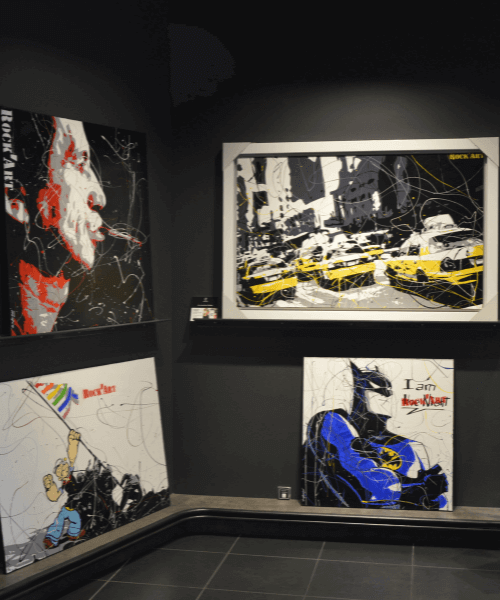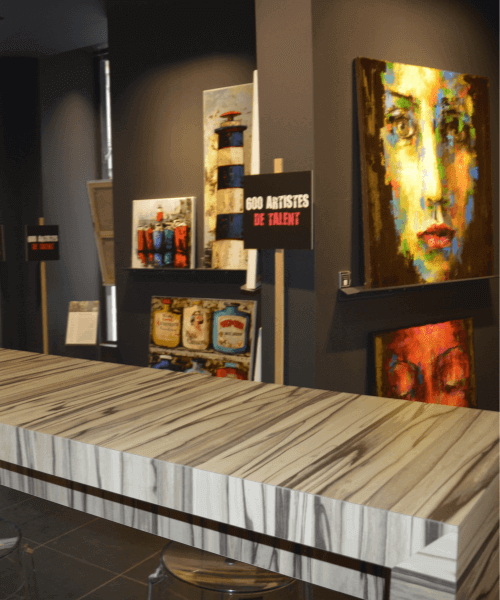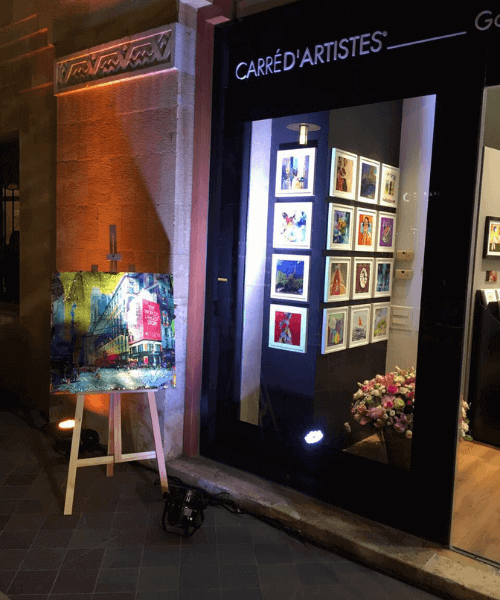Buying an atwork at auction: our tips
Wondering where to buy an artwork?
Auction houses offer artworks in their auction catalog.
You don't have to invest millions of dollars or euros and go to Christie's or Sotheby's to buy art.
You want to experience the adrenaline rush of an auction when you outbid the item you want.
There are a few things you should still know before you start.
How do I buy an artwork at auction? Here are our tips.
Summary
Buying art at auction: how does an auction work?
You will find accessible art in auction houses all over France.
These are sales from estates, from artist studio funds.
How do I buy a work of art at auction?
As the buyer, you do not have to be physically present during the auction.
Other means are available to you:
- Online auctions via the Internet.
- Telephone auctions.
- Bids by firm order: the auctioneer or his assistants bid up for you, up to the amount you set.
However, it is advisable to go to the public exhibition before the sale to realize the condition of the objects that interest you. In principle, the exhibition catalog should precisely identify all defects.
If you are unable to travel, you can make a request for information or have additional photos sent to you.
So you can buy art anywhere in the world and enhance your collection.


Considered sold!
In an auction, works are sold as soon as the auctioneer says the word "adjugé".
Before the sale, the seller of works of art sets a reserve price with the auctioneer. This means that the work can be withdrawn from sale if the auction price is lower.
Buyers do not have a right of withdrawal in the same way as in consumer law.
When the auctioneer says the word "awarded" it is considered a transfer of ownership and the last person to raise their hand owes the payment of the price.
How do you know when you are buying the right price at an auction?
How do you know that you are not going to buy your overpriced paint?
It is quite simply the subject of an appraisal and an estimate by the auctioneer who can be assisted by an expert.
The rating of an artist
Auction houses publish the detailed results of their sales for several days. It is all of these sales that partly determine an artist's rating.
The price of an artist's painting will generally be lower than that charged by individuals, art galleries or antique dealers.
The advantage with auctions is that all buyers have the same information and can buy freely.
The catalog estimate is indicative and the starting price is often the lower end of the range.
However, the recent auction of an NFT work by artist Beeple at Christie’s could give us a lie.
A digital work that broke a sales record as it sold for nearly $ 69 million.
American artist Beeple, a specialist in NFT works had never exhibited before.
Costs related to an auction
You must consult the general conditions of sale to know the costs of the auction house.
The auctioneer makes a reminder at the start of the sale. The amount of the sale corresponds to the amount of the auction, to which is added a fee of between 15 and 30% for the remuneration of the auctioneer.
Finally, you must add the VAT on the costs which is 20% for paintings or other art objects.
If you are unable to collect the items or paintings promptly after the sale, security charges may apply, or delivery charges if sent.
Buying a work of art at auction: what are the guarantees of authenticity?
An auctioneer assisted by an expert prepares the auction.
The auctioneers are responsible for the information they give in the sales catalog.
However, the law allows them to change this information until the last moment and even orally during the sale.
Article 2 of Decree No. 81-225 of March 3, 1981 on the suppression of fraud in the transaction of works of art and collectibles provides further details.
The name of a work or object followed immediately and only by reference to a historical period is a guarantee for the buyer that this work or object was actually produced during that period.
Terms used by auctioneers such as, "attributed to", "workshop", "school" are also warranties.
What are the remedies for an auction?
If you believe you have been abused by an auction house, you can report to the Council for Voluntary Furniture Sales at Public Auctions.
It is the supervisory body for auctioneers.
Complementary articles:
On the subject:
Where to buy an artwork?
Find out more:







